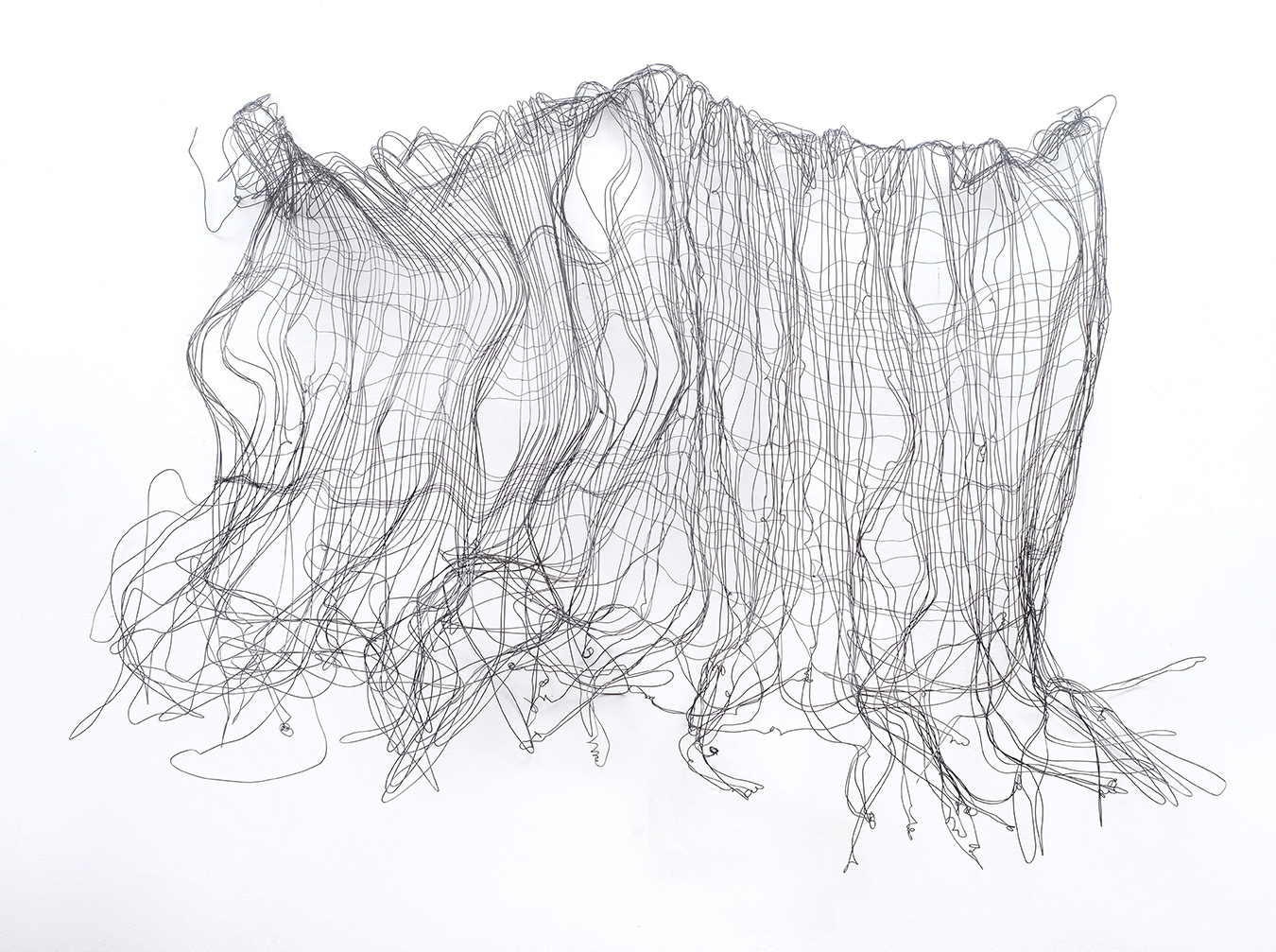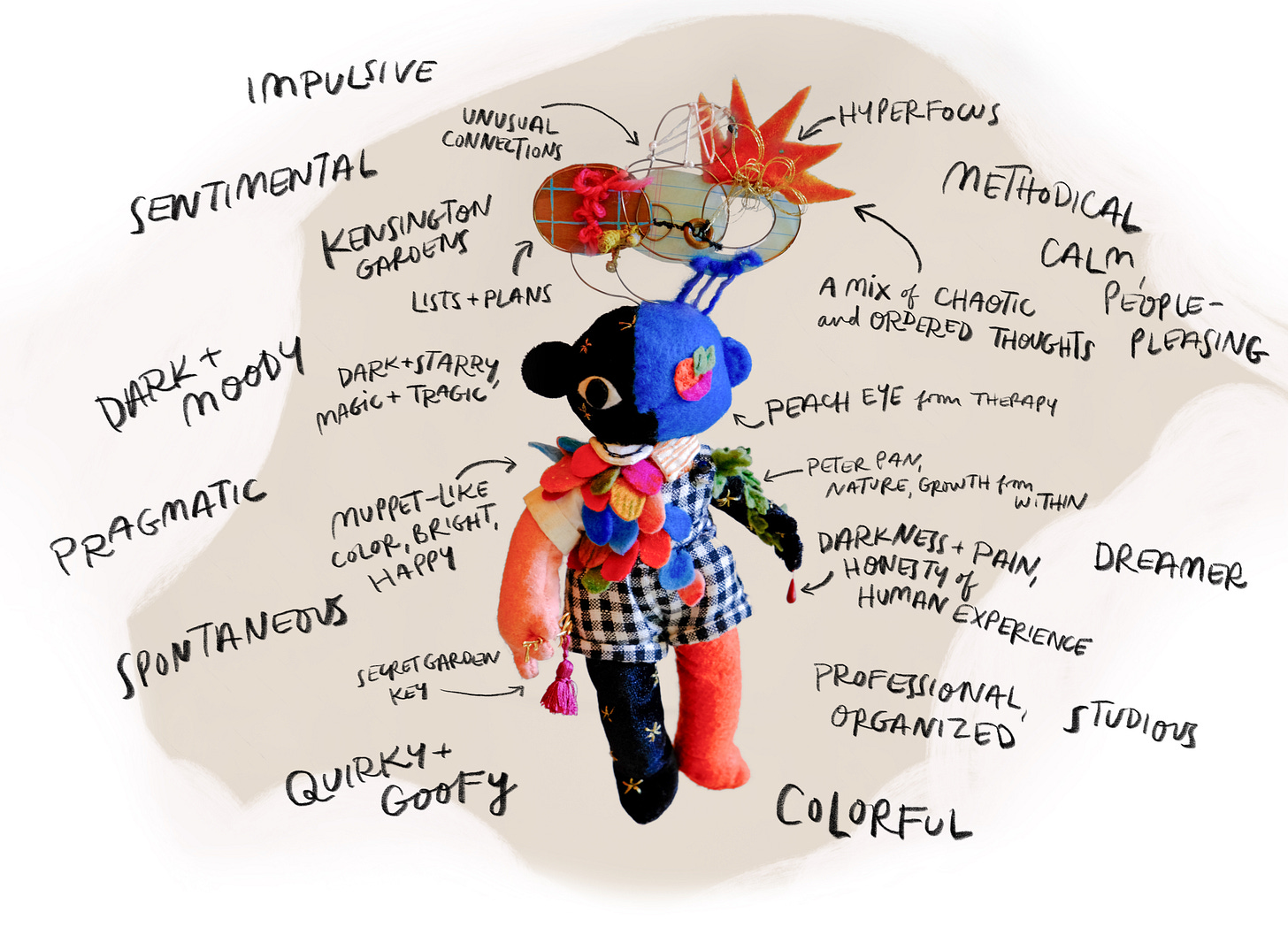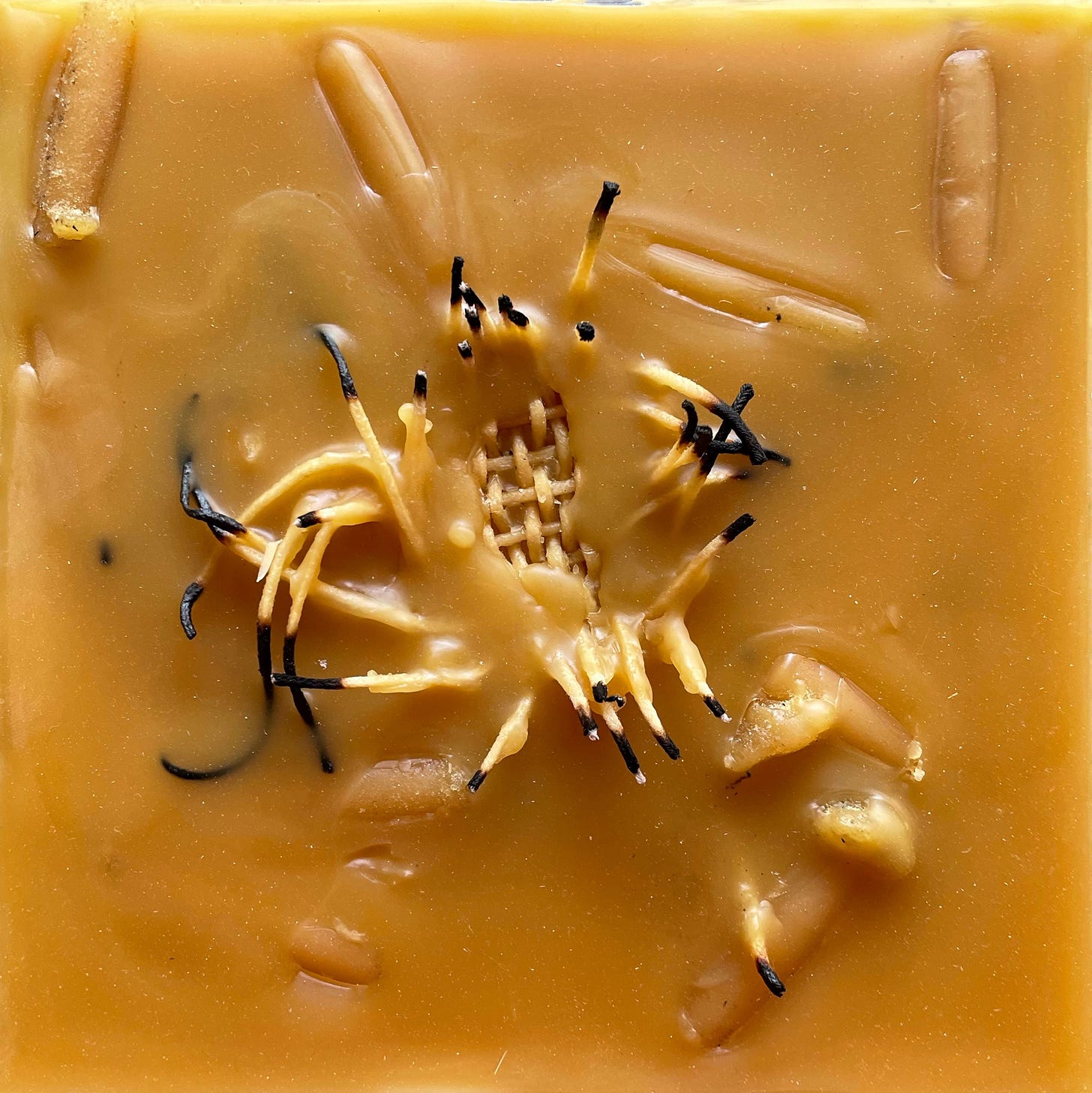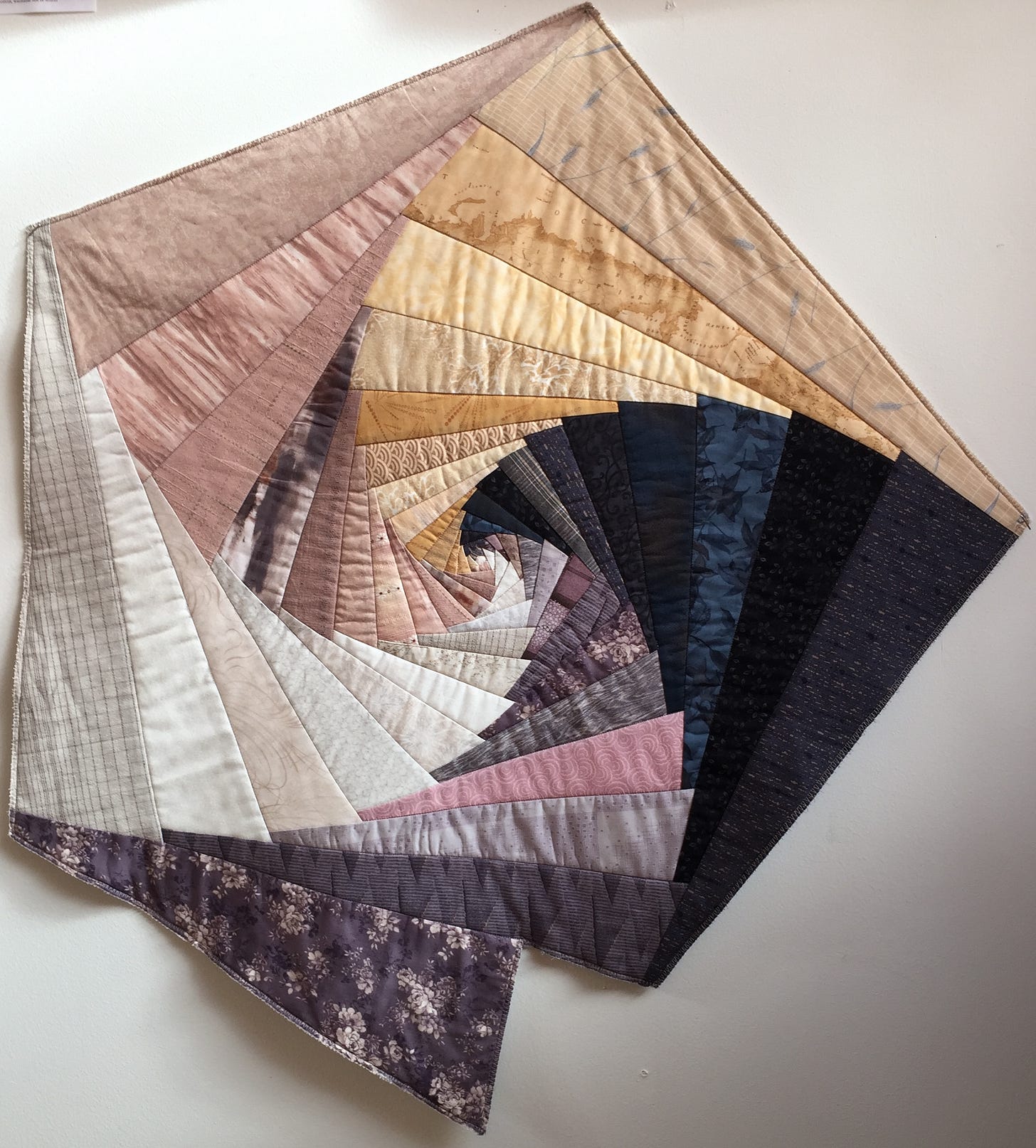State Change Slippage.
Amanda Wood
Size: 27 x 43 x 8
Medium: hand woven steel and electrical wire 2021
Letter from the Editor,
Every experience of neurodivergence is unique. To visualize the diversity within our community I asked artists to submit works inspired by the theme of weaving including related concepts such as unravelling, knots, tangles, and integration.
This is the first of two issues dedicated to this theme.
The Open Call ends September 1.
If you’d like to contribute to Neurokind or send a one time donation you can find information below. We’re 48% of the way to funding a Neurokind print publication for 2024. We need 13 more paying members to make that goal a reality.
Many thanks to
for volunteering his time to help maintain the Membership Directory and write alt text.Celebrate the artists by sharing this issue. I also encourage you to take the time to reach out and connect with artists whose work you resonate with. Visit their websites or subscribe to their newsletters to continue following their work.
Cheers,
All Together Now
Over the years, I’ve been unaware of, rejected, or just plain struggled to accept various parts of myself. This project is an attempt to incorporate them all into one place in some way. To accept myself with all my varied, seemingly-contradictory parts.
I tried to lean into these contradictions in designing this puppet, and not try to make them all shiny and clean and homogenous. These bright and dark and ordered and chaotic parts all go together because they are together—whether or not they make sense from the outside, they are all part of a whole: Me.
Keep reading about Gracie’s puppet (and see more images) here.
the middle of it
the third thread is the shoelace I helped my son tie
before he ran off to school without a warm layer
in the cold spring air
the fifth thread is pale
sunwarmed
fine and soft and gathered together from
my lips
the first thread was a gift
funny how it’s not really first
as it lays quietly with all the others
(no, it isn’t quiet enough)
the fourth thread is wound between
our fingers
the second thread is a string of jokes
the sixth thread is brittle, frosty breaths in a winter sky
afraid of a beautiful future
Repression.
Amanda Jolley
Ease my clouded mind.
Mindy Wara
The Rumpelstiltskin Principle
Gifted. Highly Sensitive. Generalized Anxiety Disorder. Sensory Processing Disorder. Obsessive Compulsive Disorder. These are my labels in order received. I wonder about another one.
“You know…” I tell my therapist. “I’m forever trying to figure out if I’m autistic.”
Why do I care so much? I don’t imagine one more label will change my life.
A spinneret is a silk-spinning organ located at the tip of a spider’s abdomen. Most spinnerets are complex structures comprised of many microscopic spigots, each producing one filament. Groups of spigots enable the spider to combine multiple filaments and produce a variety of proteinaceous silk.
Spiders weave their silk into a variety of webs: spiral orb webs, tangle webs, funnel webs, tubular webs, and sheet webs. Only abandoned spider webs and three-dimensional tangle webs are labeled “cobwebs.”
The Japanese boy in my first-grade class of gifted children was specially interested in insects. Once, he hid a spider in his neighbor’s desk.
I spend multiple years reading books and research papers, listening to podcasts and YouTube videos, following autistic self-advocates on social media, learning everything there is to know about autism, specifically autism in those born female. The more I learn, the more confused I feel. What even is autism? I can’t pin it down. I picture a spider mounted to a board behind glass, a surgical pin dissecting its thorax. I learn that this, this thing I do – diving down rabbit holes and getting stuck in the tangled brambles of information – is, in a word, autistic.
I consciously choose not to go forward with an autism assessment because I very arrogantly decide I know just as much about autism as any psychologist and decidedly more about myself.
Yet I remain trapped in a web I can’t abandon. I still don’t have an answer. I don’t know why I need one so desperately.
The titular spider from the children’s book Charlotte’s Web spun silk into words. She wrote, “Some Pig,” and Wilbur-the-Pig was spared from slaughter. Or maybe it’s more accurate to say effective interspecies communication saved Wilbur’s life.
A woman says to me, as we try to unravel a misunderstanding, “I think we just have different communication styles.”
“Ohhhhh yes,” I say.
“What would it feel like…?” my therapist asks, “…to say, ‘I’m autistic, and this is how I communicate.’”
The German fairy tale king locked the miller’s daughter in a tower room full of straw. He ordered her to spin the straw into gold and threatened to kill her if she failed. Though if she was successful, he vowed to marry her. Just as she gave up hope, an imp-like man appeared and saved her life; he completed the task for a small price – the promise of her first-born child.
A spinning wheel twists a collection of fibers into yarn. A loom is a frame for interlacing two or more sets of yarn, at right angles, to form a cloth. Cloth of any material – cotton, wool, or silk – can be sewn into a wedding dress.
The miller’s daughter became the queen when she married the king, and when their first child was born, the imp returned to claim his prize. She begged, pleaded, and bartered with the imp until he agreed to dissolve their contract if, and only if, she could guess his name.
The Rumpelstiltskin Principle is a social psychology concept based on the historical belief that to give or know a person’s true name or title is to have power over them. There is power in naming one’s identity.
Laura Waldrop
Whelk 7: Into and Out Of.
Catherine Paul
Neurokind is a passion project.
There is no paywall. The publication is free to all.
This is not a business enterprise. It’s not a side hustle. It’s not a marketing funnel.
You can support Neurokind by becoming a paying member.
Every dollar earned will go back into the project.
With your help we can bring Neurokind to print. Monthly pledges are just $5.
With 25 paying members we can fund an annual print publication.
You can read more about membership perks here. If you’d prefer to send a one time donation you can do that through Venmo. If you do, please include the note “Neurokind” so I know what it’s for.
Meet our supporters.
Thanks to our supporters including
, , , , , , , , , , Erica Settino, and to those who wished to donate anonymously.You can see their work and Substack publications here:
Neurodivergent Artist Directory
Members of Neurokind are artists, writers, and interdisciplinary creators who identify as neurodivergent. Please use this directory to support their work and reach out for collaborations. Are you a neurodivergent artist, writer, or creator? It’s completely free to submit work to the latest
How to support this project:
Forward Neurokind to a friend.
Share or “restack” on Substack.
Post a screenshot to social media (tag us on Instagram.)
Spotlight Neurokind in your newsletter.
Tell a friend about the Open Call.
I’m also looking for opportunities to host a physical art exhibition. If you have any ideas (including creative or non traditional venues) please reach out!
Comments are open so you can support the artists.
Please be kind or you will be removed from participating in this space.














A beautiful experience this Friday evening. I loved being introduced to new art and ways with things here. ✨🪞